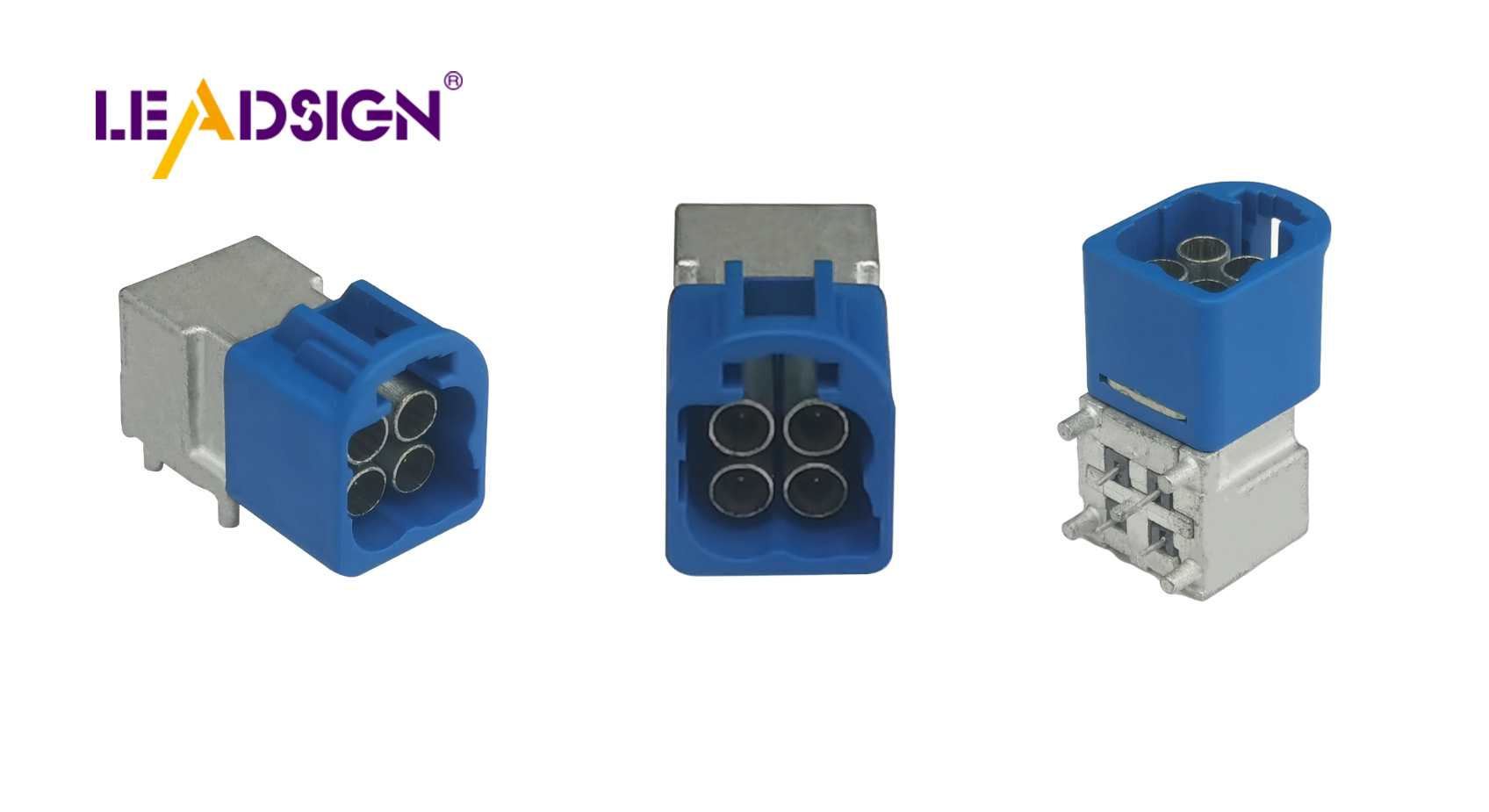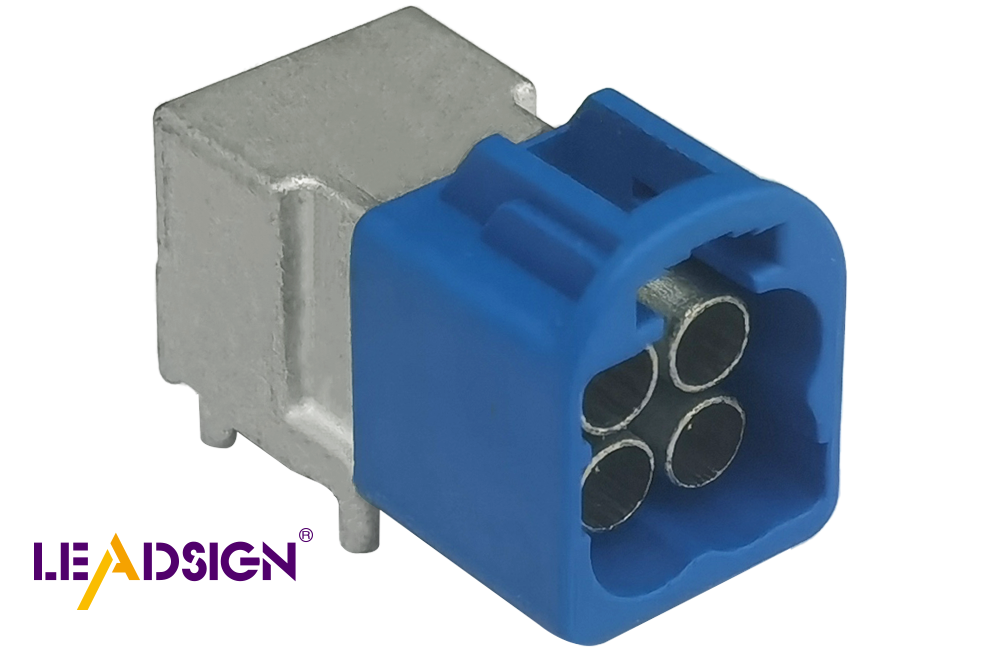Automotive Electrical Connectors Types Explained

Car electrical connectors are important parts in vehicles. They help connect different electrical pieces smoothly. Picking the right automotive electrical connectors types boosts performance and safety. These connectors affect how reliable a car is. If connectors fail, it can cause problems. MIL-HDBK-217 says connector failures depend on active pins and environment. So, knowing about car connector types is key for keeping cars efficient and safe.
Overview of Car Electrical Connectors Types
Car electrical connectors are very important in cars. They help connect different electric parts smoothly. Knowing the types helps pick the right one for each job. This part shows car connector types by what they do and where they are used.
Grouped by Function
Car electrical connectors can be grouped by what they do. Each type has a special job in the car's electric system.
Power Connectors
Power connectors move electricity around the car. They carry strong currents and voltages. These connectors must be strong to stop power loss and keep things safe. When picking power connectors, think about current rating and wire size.
Signal Connectors
Signal connectors send low-voltage signals between car parts. They help sensors, control units, and other electronics talk to each other. Good signal quality is important, so use connectors with low contact resistance and good materials like gold or silver-plated alloys.
Data Connectors
Data connectors move digital info inside the car. They work with systems run by microprocessors. Fast data connectors, like High-Speed FAKRA-Mini, send real-time data up to 20 GHz. These are key for self-driving cars and entertainment systems.
Grouped by Use
Car electrical connectors are also grouped by where they're used in the car. Different places need special connector types for best performance.
Engine Area
Connectors in the engine area must handle heat and shaking. They link important parts like sensors and actuators. Picking strong and reliable ones is crucial here.
Inside Electronics
Inside electronics connectors join things like dashboards, entertainment systems, and climate controls together. These need to be small but effective due to limited space inside cars.
Outside Lights
Outside lights' connectors link headlights, taillights, etc., together. They must resist weather to keep moisture out of connections. Sealed multi-pin ones ensure reliability even in tough conditions.
Knowing these car electrical connector types helps make smart choices for fixing or upgrading cars. Picking right ones boosts how well a car works safely.
Detailed Descriptions of Connector Types

Knowing different car connectors is important for fixing cars. Each type has a special job and benefits. Let's look at some common ones used in cars.
Crimp Connectors
Crimp connectors are popular because they are easy to use. They join wires by squeezing a metal piece around them. This makes a strong link without needing soldering. It's important to pick the right size for the wire. This keeps signals clear and stops problems. "Measure twice, crimp once" means be careful when doing this. Crimp connectors are quick to install and hold well.
Bullet Connectors
Bullet connectors look like bullets and connect wires easily. They have two parts that snap together tightly. These are used in car lights and low-power jobs. You can disconnect them easily, which helps if you need to fix things often. Bullet connectors give a good link but let you change wires if needed.
Spade Connectors
Spade connectors have a flat end that fits onto posts easily. This makes them simple to put on or take off, even in tight spots. They connect wires to switches or relays in cars. Spade connectors come in different sizes for various wire thicknesses. Their ease of use makes them popular for many car tasks.
Knowing these connector types helps choose the right one for each job in cars.
Butt Connectors
Butt connectors join two wires end-to-end securely. They are tube-shaped and need crimping to hold wires tight. This connector is great for permanent wire connections in cars. You must pick the right size for a snug fit. This stops signal loss and keeps electricity flowing well. First, strip the wire ends, then put them in the connector. Use a crimp tool to squeeze the metal around the wires. This makes a strong bond and good electricity flow.
Heat Shrink Connectors
Heat shrink connectors give extra protection for car wires. They work like crimp connectors but have a heat sleeve that shrinks tight around wires. This is useful where there’s moisture or bad stuff in the air. After crimping, heat makes the sleeve shrink, sealing out water. This keeps them working long and well, perfect for outside or engine areas.
Weather Pack Connectors
Weather Pack connectors handle tough conditions well, making them common in cars. They have seals that keep dirt and water out of connections. Each has plastic housing, silicone seals, and locking terminals. They're used in engines and places with lots of weather exposure. Weather Pack connectors stay strong even in extreme heat or shaking, giving car owners confidence.
Deutsch Connectors
Deutsch connectors are strong and last long in tough places. They have many pins to keep connections safe, even when things get rough. These connectors are used in big trucks and machines. They lock in place so they don't come apart by accident, which keeps electricity flowing.
To put Deutsch connectors on, people use crimping. It's important to connect wires right for good signals. Crimping means squeezing metal around a wire to hold it tight without using solder. This makes sure the connection stays strong, even with shaking or bad weather.
Metri-Pack Connectors
Metri-Pack connectors are useful and work well in cars. They come in different sizes for various electric systems. These connectors seal tight to keep water and dirt out, perfect for engines and harsh spots.
Putting on Metri-Pack connectors is like Deutsch ones; you crimp them on. You need the right wire size and tool for a good fit. They're easy to take apart for fixing things. Their small size helps save space inside cars.
Molex Connectors
Molex connectors are common in cars and electronics because they're flexible and simple to use. They can connect wires together or to boards. These connectors work well with different power levels.
You can attach Molex connectors by crimping or soldering, based on type needed. Crimping is quick but soldering lasts longer. Pick the best way depending on what you need and the connector's details.
USB Connectors
USB connectors are important in today's cars. They help connect devices like phones and tablets. These connectors come in different types, each with a special use.
USB-A: This is the most common type in cars. It helps move data and charge many gadgets. Its rectangle shape is easy to spot.
USB-B: Not often seen in cars, USB-B links things like printers. It has a square shape with slanted corners.
USB-C: Known for being reversible, USB-C moves data faster and gives more power. It's becoming popular in new car models.
Micro-USB: Used for older devices, Micro-USB is smaller than USB-A and USB-B.
These connectors make car systems better by linking them to outside devices. They help charge gadgets, play music, and use maps easily.
Solder Connectors
Solder connectors join wires strongly and forever by melting metal to stick parts together well. This makes sure electricity flows smoothly and parts stay strong.
Advantages:
Strong Connection: Soldering holds up against shaking and tough conditions.
Low Resistance: The joint lets signals pass easily without slowing down.
Disadvantages:
Skill Requirement: You need practice to solder well.
Time-Consuming: Soldering takes longer than other ways like crimping.
Connecting wires right is key for good signals. Soldering is great if you want a lasting link that won't fail, especially in important car systems where trust matters most.
Installation Techniques
Crimping
Crimping is a common way to join wires in cars. It squeezes a metal piece around the wire for a tight hold. This method makes a strong link without using solder. Tools like the Sta-kon crimper help do this well. When choosing crimp connectors, think about wire size and current needs. Good crimping lowers resistance and keeps signals clear. Many car experts like this method.
Soldering
Soldering joins wires by melting metal to stick them together. This gives low resistance and good signal flow, which is important for quality. Soldering takes skill and time but makes strong connections. It's great for places with lots of shaking, where strength matters most. Practicing helps make sure these links last in tough spots.
Heat Shrinking
Heat shrinking protects wire links using shrink tubing. After crimping or soldering, put tubing over the join and heat it up. The tube shrinks tight around wires, keeping out water and dirt. These are useful in harsh areas like engines, making connections last longer and stay safe over time.
Q&A: Common Problems and Maintenance Tips
Common Issues with Connectors
Car electrical connectors can have problems that affect how cars work. One big issue is rust, which happens when water or dirt gets inside the connector. This makes it hard for electricity to pass through and can cause failure. Loose connections are another problem, often caused by shaking or bad installation. They can make car systems act weirdly because of on-and-off electricity flow. Also, connectors wear out over time, especially in hot or shaky places.
Solutions and Preventive Measures
To fix these problems, try these solutions:
Stop Rust: Use connectors with waterproof seals or put special grease on them to keep out water and dirt. Check them often to catch rust early.
Keep Connections Tight: Use the right tools for installing connectors and make sure they fit well. Regularly check and tighten them during maintenance.
Pick Strong Connectors: Choose connectors made from good materials like metal for tough jobs. Think about things like power needs and wire size when picking them.
Maintenance Tips for Longevity
Taking care of car electrical connectors helps them last longer. Here are some tips:
Check Often: Look at connectors regularly for signs of damage or rust. Finding issues early stops bigger problems later.
Clean Properly: Use safe cleaners to remove dirt from connectors but avoid harsh chemicals that might harm them.
Store Right: Keep extra connectors in a dry place away from moisture and dirt.
Replace When Needed: Change any worn-out or damaged connectors with good quality ones to keep the car's electric system working well.
By knowing common issues and following these tips, car owners can keep their electrical connectors working well, which helps their cars stay safe and perform better.
Knowing different car electrical connectors is important for keeping cars safe and working well. Installing them right helps the car run smoothly. When picking connectors, think about how strong they are, the weather they will face, and how well they carry signals. Good connectors, like those with gold or silver coatings, keep signals clear and last long. By choosing the best connectors for each part of the car, people can make their cars last longer and work better.
See Also
Understanding HSD Connectors Essential for Automotive Applications
Why Fakra Connectors Are Crucial for Today's Vehicles
A Comprehensive Overview of Ford's Fakra Connectors

